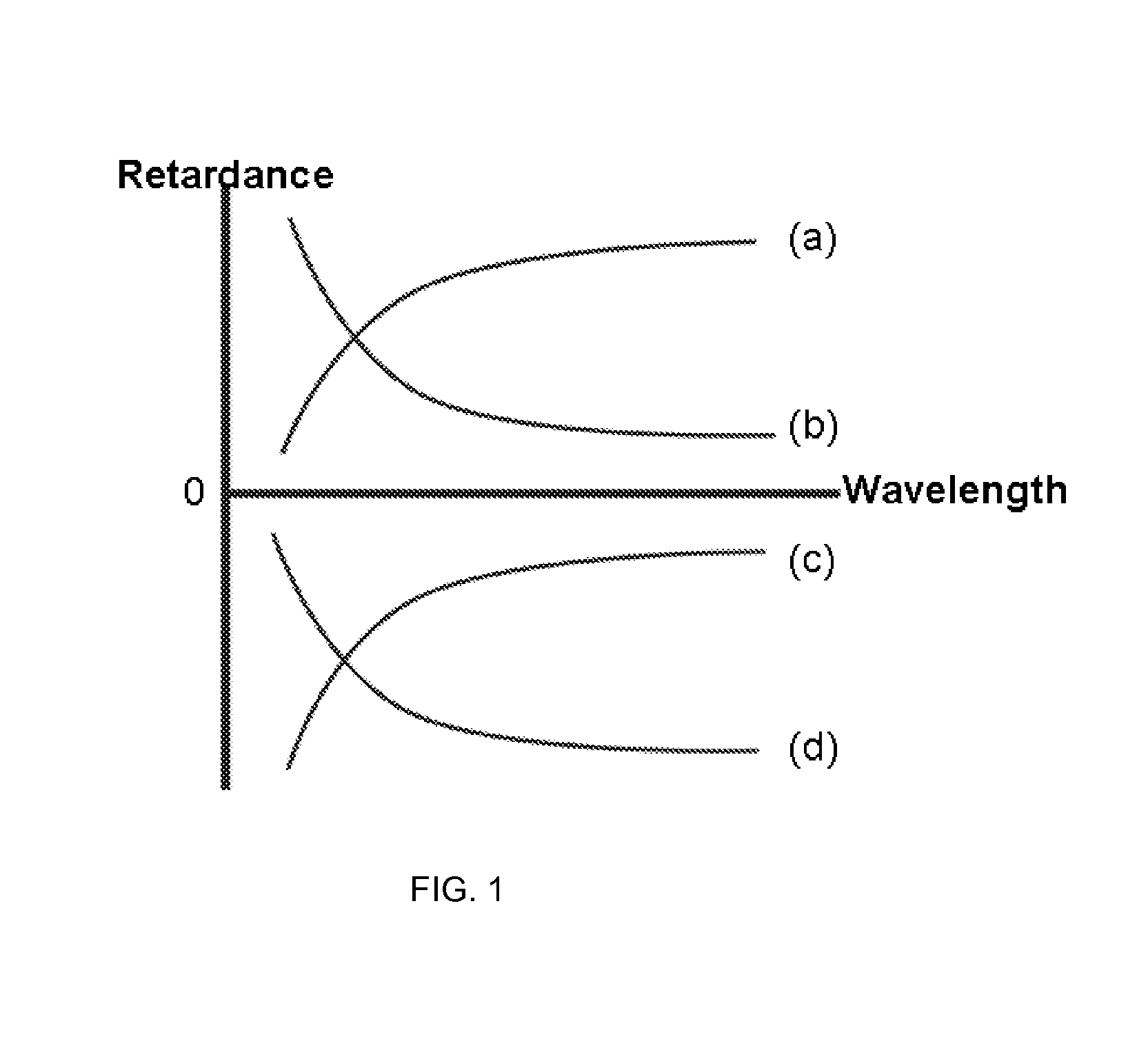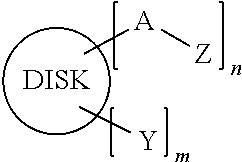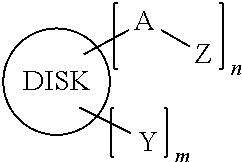Optical films containing optical retardation-enhancing additive
- Summary
- Abstract
- Description
- Claims
- Application Information
AI Technical Summary
Benefits of technology
Problems solved by technology
Method used
Image
Examples
example 1
Preparation of Cellulose Ester Film 1 Having Normal Dispersion Curve
[0084]A solution of cellulose ester polymer was prepared by mixing a cellulose acetate propionate (45 g) having DS of acetate (DSAc)=0.18, DS of propionate (DSPr)=2.50, and DSOH=0.32 in a solvent blend, methylene chloride / ethanol (90 / 10 wt. %), 363 g, followed by the addition of the additive, 2-naphthyl benzoate, 4.45 g. The resulting mixture was placed on a roller for 24 hours to yield a uniform solution.
[0085]The solution prepared above was cast onto a glass plate using a doctor blade to obtain a film with the desired thickness. Casting was conducted in a fume hood by an automatic drawdown machine. The relative humidity of the hood was controlled at 40%-50%. After casting, the film was allowed to dry for 45 minutes under a cover pan to minimize the rate of solvent evaporation. After the pan was removed, the film was allowed to dry for 15 more minutes and subsequently peeled off from the glass. The free standing fi...
example 2
Preparation of Cellulose Ester Film 2 Having Normal Dispersion Curve
[0088]A solution of cellulose ester polymer was prepared by mixing a cellulose acetate (45 g) having DSAc=2.84, DSOH=0.16 in a solvent blend, methylene chloride / ethanol (92 / 8 wt. %), 357 g, followed by the addition of the additive, 2-naphthyl benzoate, 3.65 g. The resulting mixture was placed on a roller for 24 hours to yield a uniform solution.
[0089]The solution prepared above was cast onto a glass plate as described in Example 1 to obtain a film with the desired thickness. The resulting film (CE-2) was stretched according to Example 1 at various temperatures to a stretch ratio ranging from 1.25 to 1.40. The results are listed in Table 2.
TABLE 2Retardations of the Stretched Cellulose Film 2Film ThicknessAfterStretch StretchingRatioRe(589),Rth(589),Re(450) / Re(650) / (microns)(TD × MD)nmnmRe(550)Re(550)CE-2a741 × 1.30 at 117.6−161.11.0140.999165° C.CE-2b781 × 1.25 at125.7−162.91.0130.999167.5° C.CE-2c801 × 1.40 at 131....
example 3
Preparation of Cellulose Ester Film 3 Having Normal Dispersion Curve
[0090]A solution of cellulose ester polymer was prepared by mixing a cellulose acetate propionate (48 g) having DSAc=1.59, DSPr=0.85, DSOH=0.56 in a solvent blend, methylene chloride / ethanol (90 / 10 wt. %), 352 g, followed by the addition of the additive, naphthalene, 4.8 g. The resulting mixture was placed on a roller for 24 hours to yield a uniform solution.
[0091]The solution prepared above was cast onto a glass plate as described in Example 1 to obtain a film with the desired thickness. The resulting film (CE-3) was stretched according to Example 1 at 160° C. to a stretch ratio ranging from 1.06 to 1.08. The results are listed in Table 3.
TABLE 3Retardations of the Stretched Cellulose Film 3FilmThicknessAfterStretch StretchingRatioRe(589),Rth(589),Re(450) / Re(650) / (microns)(TD × MD)nmnmRe(550)Re(550)CE-3a821 × 1.08 at 136.0−214.71.0080.995160° C.CE-3b801 × 1.07 at 117.4−200.41.0070.996160° C.CE-3c821 × 1.06 at 122.5...
PUM
| Property | Measurement | Unit |
|---|---|---|
| Thickness | aaaaa | aaaaa |
| Thickness | aaaaa | aaaaa |
| Length | aaaaa | aaaaa |
Abstract
Description
Claims
Application Information
 Login to View More
Login to View More - R&D
- Intellectual Property
- Life Sciences
- Materials
- Tech Scout
- Unparalleled Data Quality
- Higher Quality Content
- 60% Fewer Hallucinations
Browse by: Latest US Patents, China's latest patents, Technical Efficacy Thesaurus, Application Domain, Technology Topic, Popular Technical Reports.
© 2025 PatSnap. All rights reserved.Legal|Privacy policy|Modern Slavery Act Transparency Statement|Sitemap|About US| Contact US: help@patsnap.com



